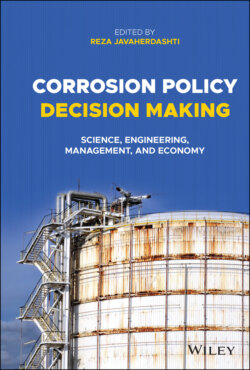Читать книгу Corrosion Policy Decision Making - Группа авторов - Страница 31
2.2.5.4 Paints Quality Control
ОглавлениеSometimes, for economic reasons, the paint manufacturer substitutes the use of standard raw materials for some inexpensive ones. In addition, other reasons such as lack of proper formulation, exhaustion of equipment, use of raw materials in long storing periods, etc. lead to poor quality paint production.
Absent a valid, reliable QC laboratory, the risk of using weak paints is high. Therefore, sampling and sending for quality control tests is necessary by inspectors. In Figure 2.14 some typical complications of the paint system arising from the poor quality of the paints are seen.
It is recommended that you send samples of the paints to a reputable laboratory center for quality control to make sure their quality is in accordance to the standards at least three months before application.
In addition, before beginning the surface preparation in the field, check that the type and amount of paints, hardener, and solvents of each layer is proper and under the manufacturers recommendations.
Checking the color shade, density, and weight of the paint for each layer and reviewing its conformity according to the catalog and data sheets is also recommended. Other features to be careful about are appearance of the wet and the dry film (WFT and DFT) as well as possibility of complications for each layer preferred.
Figure 2.14 Some typical complications of the paints resulting from poor quality paint features. Weak adhesion of top coat by one manufacturer on the primer (left). Weak adhesion of topcoat to intermediate (right). Weak adhesion of intermediate to primer (down).
